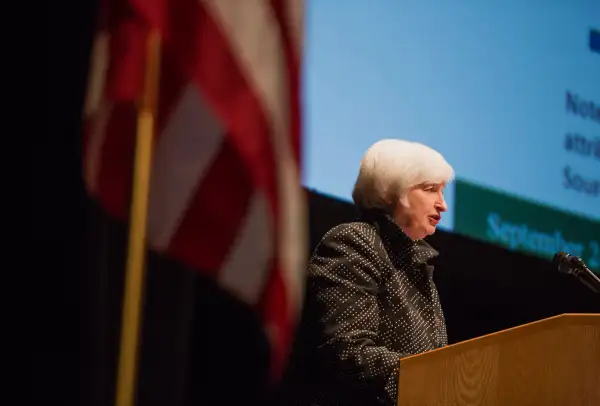The Fed Says Rates Will Stay at Zero a While Longer
Money is not a client of any investment adviser featured on this page. The information provided on this page is for educational purposes only and is not intended as investment advice. Money does not offer advisory services.

The Federal Reserve passed on another chance to raise interest rates on Wednesday. The decision to stand pat was not unexpected—a recent Reuters poll of 46 economists found zero predicting a hike. Just after the announcement, stocks pared back earlier gains, leaving the Dow roughly flat for the day.
Now the question is whether the central bank will act by its next scheduled meeting in December. Coming in to 2015, many investors and economists had expected that this would be the year the Fed would start ratcheting up the closely watched Fed Funds rate. The benchmark interest rate, which banks charge each other for overnight loans, has stood at near zero since the financial crisis.
But the global economy hasn't co-operated with the Fed's plan to get rates back to normal. A key factor: Weakness in China, where crashes in the real estate and stock market have hit the Chinese consumers that many U.S. corporations rely on to drive profits. The turmoil also helped force up the value of the dollar, making U.S. exports more expensive. With fewer goods sold in China and elsewhere, U.S. employers have had a harder time hiring and handing out raises, putting a drag on the pace of U.S. economic growth.
Indeed, U.S. jobs reports for both August and September have proved disappointing, with wage growth largely stalled. Inflation—which the Fed's interest rate hikes are designed to guard against—is a bare 0.3% using the Fed's preferred measure, well below the central bank's 2% target rate.
The Fed appeared to be keeping its options open for December. The Fed removed a line from its regular post-meeting statement suggesting "global economic and financial developments may restrain economic activity," while it added other language suggesting that instead of discussing whether to "maintain" rates it would weigh whether or not to raise them at its next meeting.
Investors reacted quickly, with futures markets shifting to project a 47% chance of a rate hike by the end of the year, up from 34% before the Fed's statement, according to Reuters.
